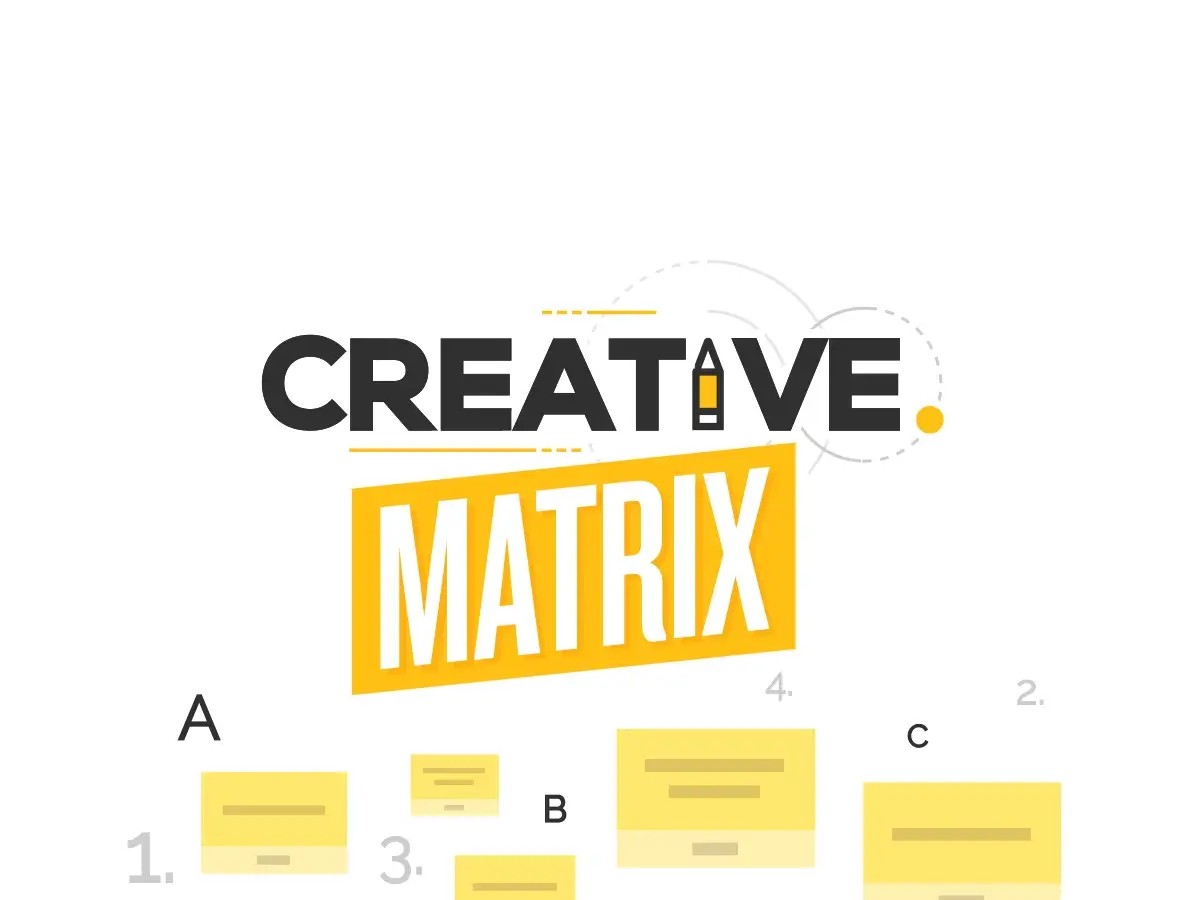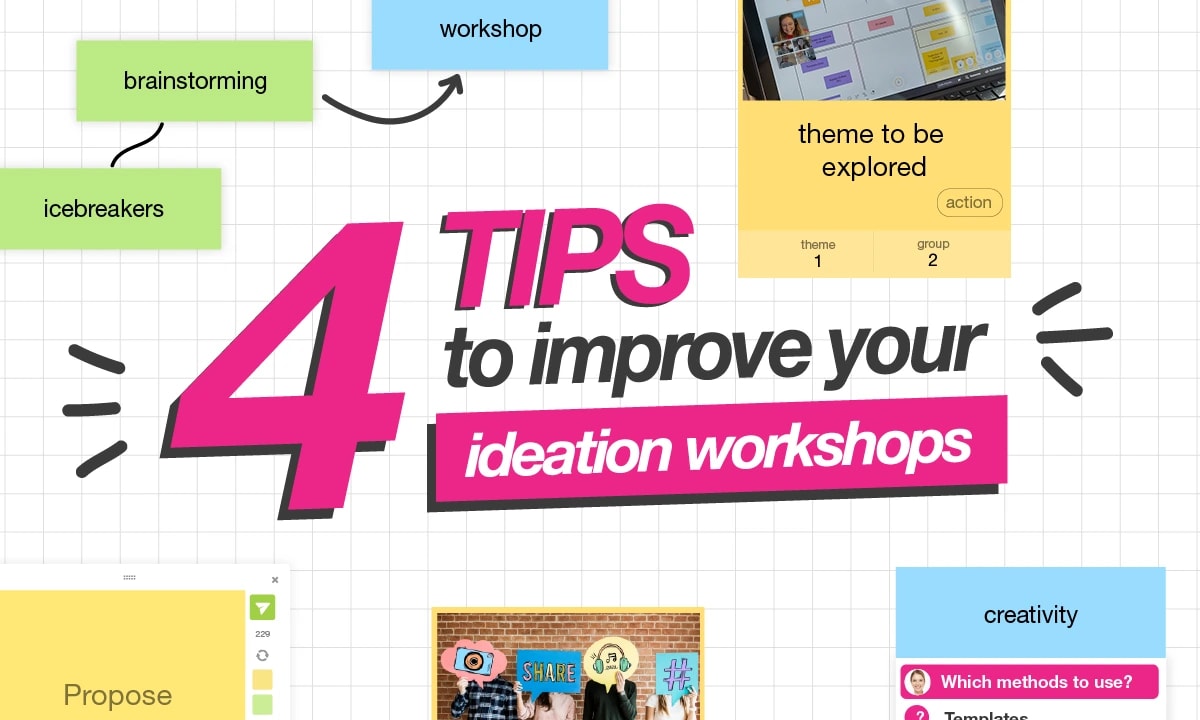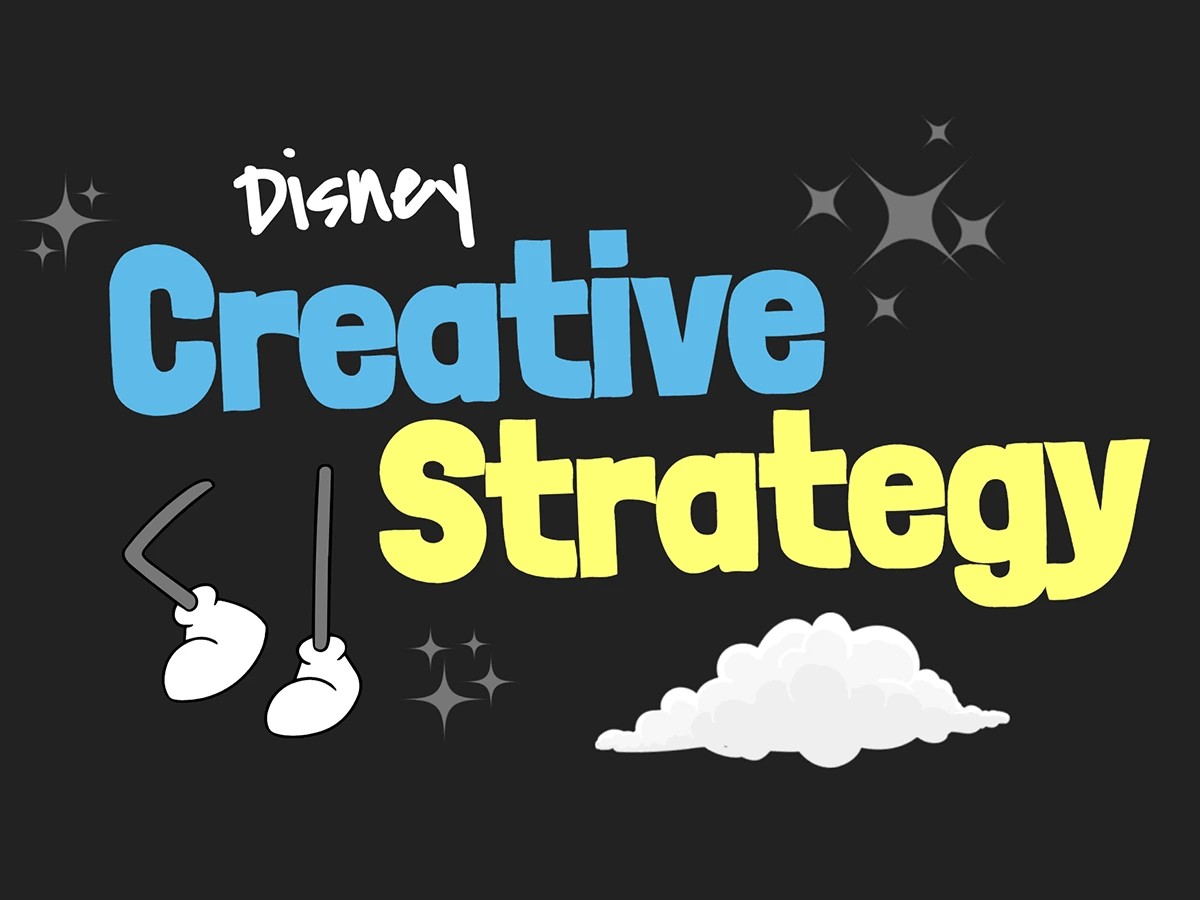The different types of creativity
Creativity comes in many shapes, forms, colors, fonts, styles, brush strokes, word choices, mediums, and more. A creative spark can come as a flash, seemingly out of nowhere, or be the byproduct of many hours of deep thinking. The results of creativity can be held in your hand like a piece of art or float through space and time like a thought.
It's easy to think that creativity can't be confined or that only a certain lucky few are actually able to be creative. But what if there was a way to confine and define it–and even hone it among your teams?

With this ready-to-use Creative Matrix online template, spark innovation with your team, and combine your ideas to generate new concepts.

Neuropsychologist Arne Dietrich is well-known for working on psychology research at the American University of Beyrouth. Born in Europe, he spent a few years exploring the world to understand more deeply the complexity of the human mind. He also graduated in Neuroscience from the University of Georgia and still explores today the complexity of the brain.
Among his most popular works during these last decades, we can find Introduction to Consciousness (2007) and How Creativity Happens in the Brain (2015). Throughout his research process, he has come to break creativity into four types:
- Deliberate and cognitive
- Deliberate and emotional
- Spontaneous and cognitive
- Spontaneous and emotional
We'll explore together creativity and the forms it can take.
What is creativity?
The definition of creativity is "the use of imagination or original ideas, especially in the production of an artistic work." That seems a bit generic. But, a more rounded definition comes from California State University, which says, "creativity is defined as the tendency to generate or recognize ideas, alternatives, or possibilities that may be useful in solving problems, communicating with others, and entertaining ourselves and others."
It's almost as if the definition of creativity is as elusive as creative moments themselves.
The four types of creativity
For our purposes, we turn to the four types of creativity as defined in a research paper in 2004 by neuropsychologist Arne Dietrich. Mr. Dietrich laid out creativity on a four-square matrix where along the x-axis is Cognitive and Emotional, and on the y-axis is Deliberate and Spontaneous. Let's discuss these four types.


Fig.1 Matrix representing the four types of creativity and associated examples according to Arne Dietrich
Deliberate and cognitive
Creativity that is deliberate and cognitive comes from hard work in a particular area. Thomas Edison, the inventor of the electric light bulb (improved from the invention of Joseph Swan) and the telegraph, is a great example of a deliberate and cognitive creator. His work involved doing experiments repeatedly, making tweaks as he did, until something finally worked. This process followed him during all his brilliant career as his work contributed exponentially to the modern world.
The prefrontal cortex (PFC) is home to this type of creativity. The PFC is one of the three regions of the frontal cortex, which is the space right behind your forehead, and is the home of the language, the memory, reflexion and superior executive brain functions. In a more concrete way, it allows you to do two things:
- Focus your attention
- Make connections amongst stored information in your brain
The key aspect of deliberate, cognitive creativity is having an already formed body of knowledge to combine existing information in new and innovative ways. Gaining this high degree of knowledge obviously takes time. So, for these types of creative thinkers, it's essential to provide lots of opportunities for research and learning.
Then, they must be provided with enough time to develop a creative solution.
Deliberate and emotional
For some, creativity comes from sitting quietly and reflecting on their situation. Dietrich calls this type of creativity deliberate and emotional. These types of creatives likely have "a-ha" moments where they seem to pull a solution out of thin air. But, most don't see that the idea isn't actually out of nowhere, but from time spent pondering and asking questions, as opposed to research and time spent studying. This type of creativity comes from the cingulate cortex–an area of the brain that connects our emotions to the PFC.
To help people whose creativity falls on this scale, it's important to give them time to think. For example, if a bad event just happened to you or a relative, you may reflect on yourself trying to understand the decisions and incidents that led to this situation. You’ll naturally use this type of creativity to reflect on the event so you can face it and ultimately, be able to move on and learn from the situation.
You can offer them questions and insights, but you shouldn't expect them to have a solution immediately. Instead, present things to them, then allow them to come back later to share their thoughts.
Spontaneous and cognitive
Spontaneous and cognitive creativity utilizes the brain's basal ganglia – this is a part of the brain where dopamine is stored, and it operates outside conscious awareness. It's also a part of the brain that is primarily involved in processing movement-related information. Someone who falls into this category is said to require time to do something else, allowing their subconscious to keep working on the problem. When explaining this type of creative thinking, an example is how Isaac Newton thought of gravity while watching a falling apple.
It does require an existing body of knowledge, but the idea is that while someone is doing another unrelated activity, their brain continues to work on a solution to their problem. Solutions may come while cleaning dishes, driving, taking a shower, or walking outside.
For spontaneous and cognitive people, it's essential to develop stages of creativity over time. For example, on day one, they may want to set up the problem but then come back sometime later to solve it.
Spontaneous and emotional
Perhaps the type of creativity that people consider the most elusive and something you either "have or don't have" is the spontaneous and emotional creativity type. Great artists and musicians such as Mozart, Baudelaire or even rap singers like Eminem are often these types of creatives and experience powerful and emotional (from the amygdala) creative moments that seem like an epiphany or even a religious experience. It's more challenging to design these moments into our regular lives, but a high level of skill is often required of the person.
When faced with team members of this type, it's essential to create an environment that helps them hone their skills and collect their creative ideas, even if the applications aren't immediately revealed.
How to harness your team's creativity
Understanding these creativity types is one thing, but putting them into practice is something else entirely. These days, being creative is made all the more difficult for people as demands at work or on specific projects don't allow the time or flexibility to really honor your creative way of thinking. Whether you're a manager, director, or employee, it's essential for most people to find time to be creative if they want to get ahead in their careers, grow their business, or develop a strong-performing team. Inner reflection is necessary for people who want to grow in their life as professionals and as people.
Here are some ways to honor and harness your team's creativity:
Encourage ideation
We all know "time is money." And depending on how fast-paced or time-crunched your business or projects are, it can be difficult to allow "time to think." But, as you can see from the descriptions above, time is exactly what some need to produce their best ideas. Encouraging ideas and creativity means consistently allowing your employees space and time to explore. Maybe you can't do it all the time, but you should do it when you can.

Discover our best tips to run effective ideation workshops and get the keys to generating ideas more effectively as a team.

Collaborate regularly
Another key to harnessing your team's creativity is providing spaces where they can collaborate regularly. Like any good sports team, they need to get to know each other and how they can work best amongst one another. That kind of teamwork requires practice. Even if you don't have a project requiring creative thinking, developing exercises or games is essential to help team members regularly work on those creative parts of their brains.
Learn from one another
Something awesome happens when we work together. We learn how to unlock each other's natural abilities, help each other step outside comfort zones, and push one another to bigger and bolder ideas and solutions. Learning how your people think and how they like to work can go a long way toward having more success and growth.
Build routines for continuous creativity
Not having an idea come to mind quickly can cause anxiety among some people, who can then doubt their skills or performance. Especially those who think of themselves as "not creative." Instead of just telling people to provide ideas, create an actual routine (or multiple routines) for your team's creative pursuits. It will also provide a safe space for your employees to stimulate their creativity.
Understand each person's individuality
Not everyone is the same, and our individuality should be appreciated as we should appreciate the individuality of others. Being mindful of everyone’s background is also key to being more inclusive and open-minded regarding new ideas and expressions of creativity. Educate your teams on the different types of creativity and encourage them to discover their own best methods for innovation. Then, honor those types by forming your meetings and projects to reflect them best.
Provide creative spaces
Whether you're at an office or your team works remotely, it's essential to provide physical and virtual spaces. There are online tools you can discover together and use to your advantage. Things like digital whiteboards, creative templates, and more out there may be worth your investment.
Share resources
Like many things in life, creativity and innovation are an inexact science, and we're constantly learning more about them. Share resources and knowledge with your team. Encourage them to seek out the latest and greatest information. Offer up interesting ideas and test their feasibility.
Conclusion
Creativity is a fascinating topic, and neuropsychologist Arne Dietrich's research is an interesting path of discovery. No matter how much we learn, the creative process is not always linear; it can involve going back and forth between different stages as needed. By understanding the different types of creativity, we can better understand how to tap into our creative potentials – and maybe even come up with some new ideas to help others tap into theirs.

As a team, adopt three different perspectives, launch a creative brainstorming and ideation session, and innovate together!

Unlock your teamwork potential
For free, make your first steps to top-tier work efficiency with the Klaxoon Work Collaboration Platform.